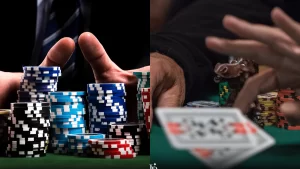
Behind the flashing lights and thrills of slot machines lies a complex system of chance. At the core of all online casino games is this intricate algorithm, which ensures fair play and unpredictability-it is also overseen by various gaming authorities who perform audits regularly to monitor it’s operation.
Understanding this complex mechanism will enable you to make more informed gaming decisions, such as sticking within a budget, taking advantage of bonuses and strategies, and keeping an eye on your gambling habits.
Random number generators
Random number generators (RNGs) are software-based algorithms that generate random sequences of digits. RNGs can be used for many purposes, ranging from cryptography to lottery games; but unlike coin flips or dice rolls, RNGs may contain hidden biases.
The most prevalent method for creating random numbers involves physical processes, such as atmospheric noise or turning of a lava lamp. Unfortunately, this method can be subject to error, as its sequence of random numbers depends heavily on an initial seed value; knowing several generated values allows an attacker to predict future results more easily; hardware devices that rely on this technique should therefore be subjected to rigorous tests for this reason and should also be protected against degradation of entropy sources caused by both natural causes or malicious attacks.
Reels
Slot machine RNGs continuously produce thousands of random numbers every millisecond while in operation, and when you pull or press the spin button, the computer quickly picks a random number from this stream and compares it with symbols on virtual reels – this process takes only fractions of a second and ensures each spin result remains unpredictable – making slots fair and exciting! Computerized reels stop on random numbers generated by a random number generator (PRNG), creating the impression of spinning reels while in fact it doesn’t mean anything – most “near misses” are simply artificially created by mathematical design of games, not random chance.
Symbols
The random number-generating system behind slot games is highly complex and sophisticated, as is its control by gambling jurisdictions. Understanding its workings will allow you to better assess your odds of success or failure.
Slot machine microprocessors randomly generate random numbers between zero and four billion in every millisecond, translating these random selections to virtual reels which then stop on these spots. Selecting numbers serves to ensure that a player cannot predict who will win; this level of unpredictability ensures fair and exciting slot gaming experiences.
Paylines
Paylines on slot machines allow you to place bets that could result in winning payouts, though many believe that the more paylines there are the greater the volatility is. However, this is simply not true as your chance of success relies on random number generator rather than payline count.
As soon as you press the “spin” button, an RNG selects random sequences of numbers at an incredible speed-each number representing different symbols on the reels with individual weightings that the RNG takes into account when choosing numbers – this ensures each spin is truly random and keeps slot machines’ integrity and excitement alive!
Bonus rounds
Science behind bonus rounds can be an intricate affair that involves simulating many spins and applying symbol weightings, to ensure the games payout percentages are calculated fairly while keeping an element of unpredictability that makes slot gaming so exciting.
RNGs utilize complex algorithms to continuously generate random numbers that create outcomes that are genuinely unpredictable, independent of past and future results, thus eliminating patterns and increasing entropy. These chosen numbers determine which symbols will appear on the reels – creating the illusion of spinning while adding excitement to slot gameplay.
As soon as a player presses the spin button or inserts coins, an RNG randomly chooses from its infinite supply a number that represents where the reels will spin – thus determining which symbols appear on their virtual screens.







